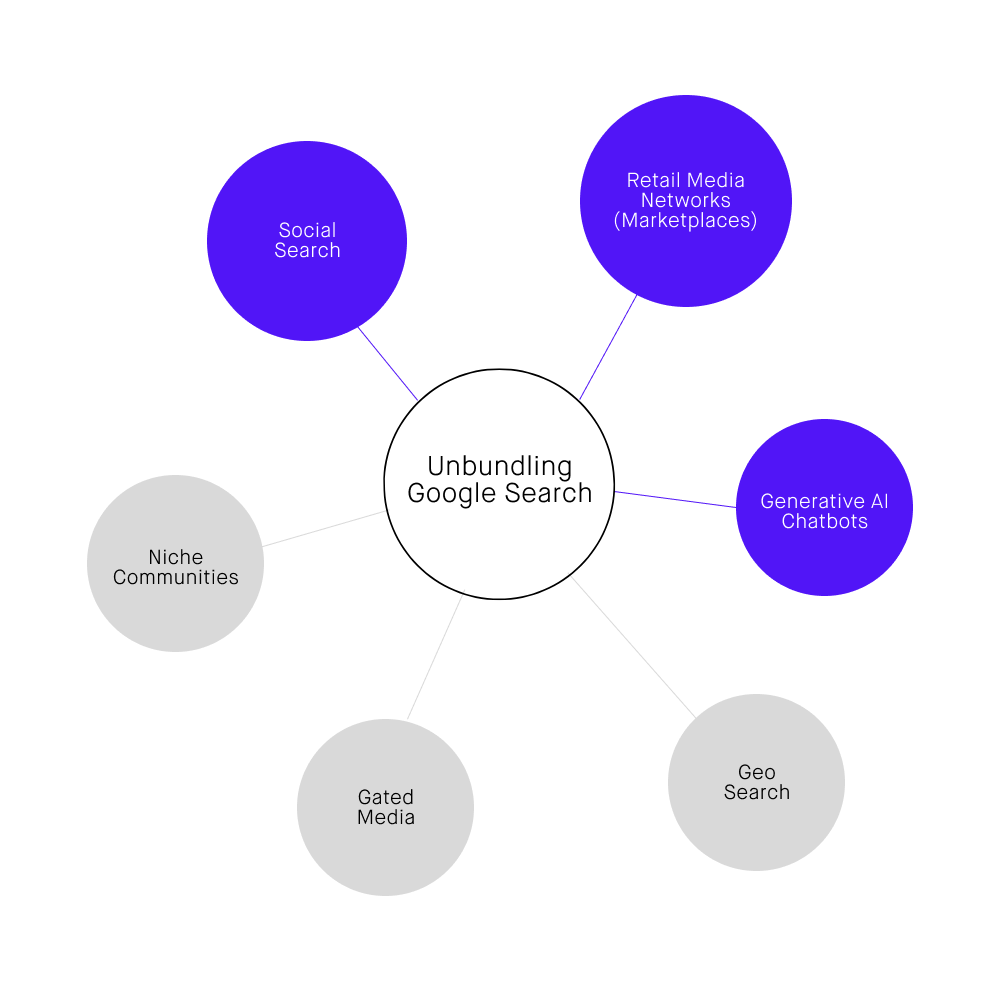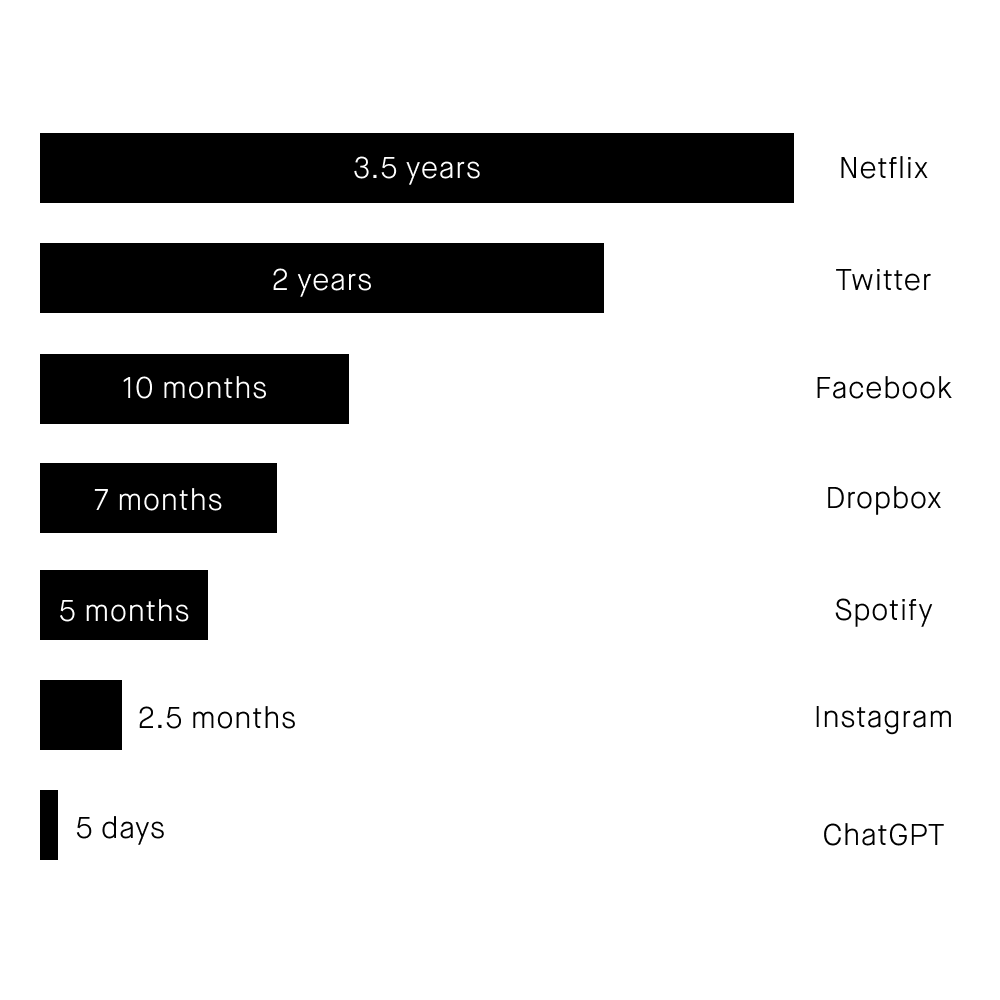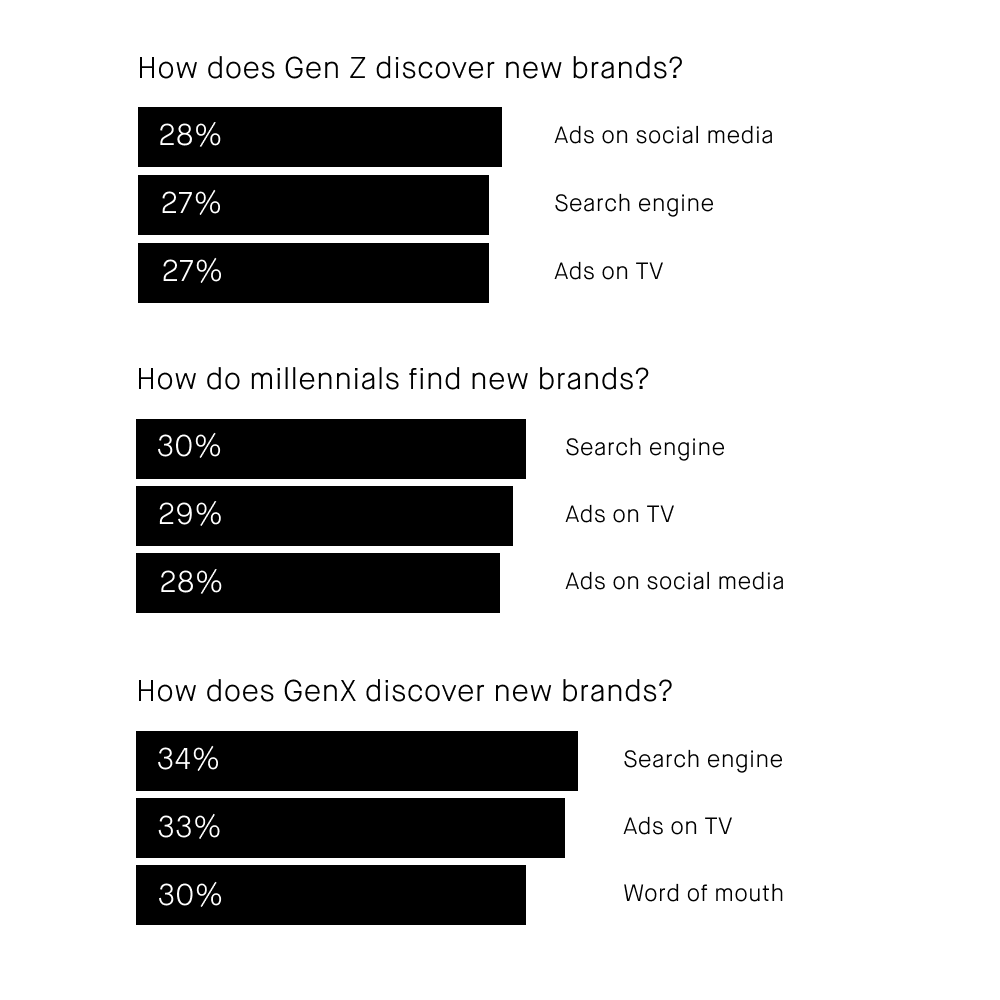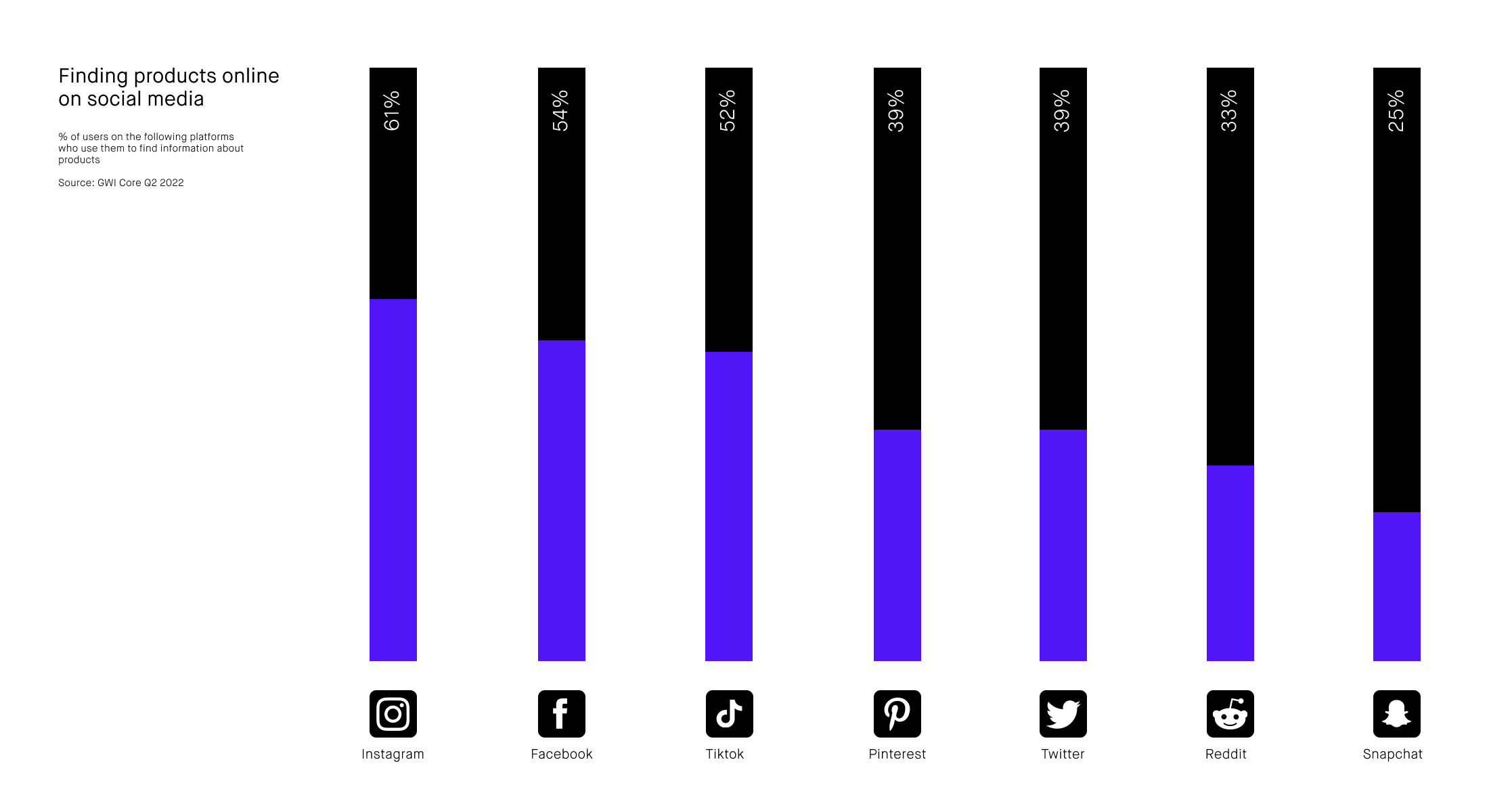For the longest time, Google Search was the main gateway to the web. But times are changing.
Google still has an effective monopoly on search with a market share of 91.75%. But today’s web is far larger and more complex than in the early days of the internet. Unbundling will not pose an existential threat to Google search, but it will divide Google’s hold on the information market to a degree.
At DEPT®, we believe that the “post-search” future is fuelled by chatbots, generative content, marketplaces, and a rising generation’s unique approach to how they discover, search, and find information.
In this playbook, we reveal three game-changing trends shaping search beyond the traditional search engine. As a marketer or brand, it’s crucial to stay ahead of the curve and adapt to these shifts to grow and maintain a successful online presence moving forward.
Let’s dive in.
The global search advertising market is growing and poised for continued expansion in the coming years.
$279
Projected search advertising spend in 2023 (billions)
9%
Annual growth rate of the ad spending market
$390
Projected volume of ad spending market by 2027 (billions)

01— AI is powering next-generation search
Microsoft Bing, Google Bard, and ChatGPT are ushering in a new era of ‘conversational’ search.
Forget typing in keywords and receiving hundreds of links as a result. Search is evolving into a “natural” conversation between Chatbot and user. AI models like ChatGPT perform various natural language processing tasks, including text classification, question answering, and machine translation.
A conversation-based interface would radically shift users from keyword-based systems like Google. So, what would it mean to replace the click economy and the search bar, with something like a conversation?
It took only a few weeks for Microsoft Bing’s search engine to reach 100 million users. Compare that to other technologies:

Source: Digital Information World
For years, human beings have been playing a game with rules set by machines. We try to gain insight into what signals search engines value. Then, we attempt to meet those standards so our content and websites rank favourably. There’s no doubt that plenty of talented SEO professionals play this game at an expert level, creating immense value for their companies. But, there are a lot of ways in which machines can play this game better than people.
Artificial intelligence is being used to help individual companies do SEO better and faster because it can analyse patterns in data faster than humans, at scale, and in real time.
AI-powered SEO tools are being deployed today by search pros to do more with less and gain competitive advantages that manual work alone just can’t match. That includes using AI to optimise existing content, suggest new topics to target, and even automate existing SEO tasks.
Thanks to this power to augment and improve AI marketing use cases like SEO, McKinsey analysts writing in Harvard Business Review estimate that AI can create $1.4 to $2.6 trillion of value in marketing and sales alone.
There’s no question… Used correctly, AI can give you SEO superpowers. Here’s how.
More effectiveness, efficiency, and speed
Using AI for your SEO strategy can help you become quicker, more efficient, and more productive when it comes to managing your digital marketing.
Think about it: AI is highly automated, which means that lengthy, time-consuming tasks are now eliminated. And because you don’t need to hire developers to code software, you can be more strategic in the planning and delivery of your digital content creation. The bottom line? Massive time and money savings. The information that you can dig out with AI for SEO is also incredibly accurate and up-to-date, which in turn helps boost productivity and inform meaningful business decisions.
Improved user experience and customer satisfaction
The very aim of all AI tools is to provide a user experience that is as relevant, useful, and personalised as possible. In a nutshell: AI is there to make your life (and your users’ lives) better. And what happens if you manage to make your clients’ lives better by providing hyper-personalised services and products? They will come back for more and spread the word about how great your brand is.
Higher rankings
Last but not least: with an AI-powered SEO strategy, you can aim for the stars. Meaning you can reach higher SERP rankings today and in the future. One of the reasons is that AI helps to craft a bespoke, stellar user experience. And user experience is one of the main criteria that impact your SERP ranking. In addition, AI for SEO will help you to lift your rankings because it enables you to discover and use exactly the right keywords, topics, and content that your audience is searching for.
Today, any SEO expert can leverage AI and ChatGPT to help them with text compilation, summarisation, questions and answers, chat, and translations.
So will ChatGPT finally spell the end of search engines? Doubtful.
While it will probably siphon off some usage from search engines, it’s difficult to imagine a wholesale change in global user behaviour that completely upends Google in the short term.
While SEOs are well-accustomed to grappling with their mortality, the past year is the first time that think-pieces threatened Google’s existence. First with Gen Z’s extensive use of TikTok and now with the AI chatbots. It’s not to say that empires don’t fall, nor that they can’t collapse quickly. Any good financial advisor would caution that past performance isn’t indicative of future results, but even OpenAI CEO Sam Altman said in this article with The Verge,
“I think whenever someone talks about technology being the end of some other giant company, it’s usually wrong. I think people forget they get to make a countermove here, and they’re like pretty smart, pretty competent. I do think there’s a change for search that will probably come at some point – but not as dramatically as people think in the short term.”
02— Social media is GenZ’s search engine of choice

Social media is the new search engine for younger generations
In a study run by Google in 2022, they found that almost 40% of young people, when looking for a place for lunch, don’t go to Google Maps or Search. They go to TikTok or Instagram.
Nowadays, links as search results are not enough. Consumers are generally more interested in visually rich forms of search and discovery, as well as reviews from people they can trust.
Source: GWI, Business wire
Traditional advertising is losing the brand discovery throne to social media
TikTok recently released Search ads, but it’s not something new to social media. Pinterest has had the option to target ads based on keywords for ages, and the same for Twitter.
But the fact that TikTok now also focuses on this means that they also acknowledge that more people are using social media to search for topics rather than getting served random content in their feed.
It has never been more important to have your organic and paid media working together across social platforms.

Social media is moving from a connection-led approach to a discovery-led approach.
That means content is served based on what people watch and engage with rather than who they’re following on the platform. Content is more relevant to who they are and what they want to see, ultimately giving brands quicker access to the people that want to buy from them.
This coupled with how digestible content is in places like TikTok, Instagram Reels, and YouTube Shorts means that it is only natural that they go there to search for what they want to know more about. Of course, that also means they consume the content and buy from the brands that help them do that.
It is critically important that the content you develop for organic and paid channels adds something to the lives of your audience.
How to leverage social media for search and discovery
Be a first mover
Being a first mover can be powerful for brands, so sign up where applicable. You’ve got nothing to lose and everything to gain.
Stay up to date with social platform’s latest ad offerings and lean into changes. For example, TikTok has released TikTok Search Ads for advertisers to tap into. The platform is planning to lean into the search space as a priority this year, with plans to launch its own search ads platform. Instagram is also capitalizing on search functionality with the announcement of ads in search results.
Prioritize discoverability
Start paying attention to visual search, it’s how most of today’s discovery organically happens.
Experiment with producing engaging content that shows up in discovery spaces like Reels, TikTok, or query-based videos. Use captions, hashtags, and text in your videos to rank higher in search. Once this baseline is set up, connect your physical showroom to your socials with live video and product feeds to reflect your physical store experience. This will create the full funnel of discovery>>purchase on a single platform.
Treat TikTok like your shop window
Social media is the new SEO, so take your social media pages and profiles seriously.
Get your shops set up by uploading your product catalogs to social media platforms. Traditionally people went online to find products, but now products find us. Look after your advocates and make the most of user-generated content. Your existing fans are an asset if you reward them for loyalty. Harness this by encouraging your followers and customers to create and share videos.
03—Retail media networks are the future of product discovery
Retail browsing was historically conducted in store or in print
The internet changed this, bringing first the browsing capability to an online format. Over time, grew accustomed to shopping online and have also started using mobile devices to browse and purchase products. E-commerce has significantly impacted the way we search for products, with retailers having played a vital role in shaping this change.

The 90s
Retail browsing happens predominantly in-store. The first online marketplace launches. Amazon and eBay launch.

The 00s
Online browsing picks up as digital storefronts become a retail norm. This is encouraged with the launch of Shopify in 2006.

The 10s
Shopping moves to mobile, and e-commerce escalates quickly. Amazon launches ads and the first retail media network in 2012.

The 20s
Most people begin their product searches on online marketplaces. Retail media networks like Walmart, ebay, Alibaba and Target are quickly on the rise.
Amazon has surpassed Google for product searches on the internet
In fact, many people now begin their product searches on Amazon, giving the e-commerce giant a consistent audience for its search function and opening up opportunities to refine the customer experience.
Amazon and other retailers’ search tools need only index the products sold on their sites. They don’t have to answer complex questions, scouring the entirety of the internet in the process (like Google). They live by more basic principles, focused on relevancy and sales velocity.
Retail media is the second fastest-growing sector of digital marketing
Aside from connected TV, retail media is the fastest-growing sector of digital marketing, with projections of 100B dollars in ad spend in the next few years.
While Amazon comprises the majority of the space in the US, others are growing rapidly as well. Retailers such as Walmart and Kroger are now looking to replicate Amazon’s success. As retailers’ share of ad spending increases, expect to see other retail media marketplaces invest in their capabilities as well.
Retail media is a game-changing approach that combines customer behaviour data and high-quality inventory to help brands reach potential customers throughout their entire buying journey, from the first interaction to loyalty.
By representing your brand at the point of sale, you can optimise each part of your campaigns and drive conversions without the need to build your own infrastructure. This approach allows you to leverage the extensive reach of marketplaces to drive sales, improve brand awareness, and increase ROI.
How you can leverage retail media for your brand
Product visibility optimisation leads to an increase in brand awareness
Product visibility on marketplaces is a key step in the customer journey. Take advantage of a new platform to increase brand awareness and build brand loyalty. For quick wins, optimise your product titles, descriptions, and images to ensure they appear in relevant search results. Use search term reports to identify high-performing keywords and adjust bids and budgets.
Use sponsored and display ads to showcase your brand values, unique selling points, and customer reviews. Use search advertising to target customers searching for products similar to yours and increase your brand exposure to a wider audience.
Leverage each platform’s data sets for personalised customer experiences
Retail media marketplaces offer various engagement tools, allowing you to interact with customers and create a personalised shopping experience. Gain access to real-time performance data and optimize your campaigns for better results. Use targeting options that allow you to reach specific audiences based on demographics, interests, and behaviours.
Focus on quality content to optimise performance
Create eye-catching ads to stand out from the crowd and highlight your product. This includes video ads to showcase products, customer testimonials, and your brand story. Interactive content, like 360-degree product images or tours, show products in unique and creative ways.
Limitless growth in search requires a combination of people and technology to succeed.
To prepare yourself for next week and next year, you need to understand the future of search marketing. Traditional search engines will continue to have their place, but chatbots, generative content, marketplaces, and social media platforms are continuously evolving. Wherever users go to search for information, products, and local services is where you need to be.
Need help in search marketing? We can help you dominate all things search.





